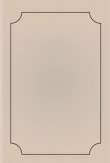You are here
قراءة كتاب Oregon, Washington and Alaska; Sights and Scenes for the Tourist
تنويه: تعرض هنا نبذة من اول ١٠ صفحات فقط من الكتاب الالكتروني، لقراءة الكتاب كاملا اضغط على الزر “اشتر الآن"

Oregon, Washington and Alaska; Sights and Scenes for the Tourist
spacious, roomy boats, well appointed in every particular. The Thompson is 215 feet long, 38 feet beam, and 1,158 tons measurement. In addition to these, there are two day mail passenger and freight boats; they handle the way traffic; the larger boats above mentioned make the run direct from Portland to Astoria without any landings.
SOME RANDOM NOTES.
A mistaken idea has possessed many tourists that the Puget Sound steamers start from Portland; they leave Tacoma for all points on the Sound, and Tacoma is about 150 miles by rail from Portland.
One steamer sails every twelfth day from Portland to Seattle.
One steamer per month leaves Portland for Alaska, but she touches at Port Townsend before proceeding north.
One steamship leaves Tacoma for Alaska during the season of 1890, about every fifteen days, from June to September.
The Ocean steamers sail every fourth day from Portland to San Francisco.
There are semi-weekly boats between Portland and Corvallis, and tri-weekly between Portland and Salem.
On the Sound there are three boats each way, daily (except Sunday), between Tacoma and Seattle; one boat each way, daily (except Sunday), between Tacoma and Victoria; one boat each way, daily (except Sunday), between Seattle and Whatcom, and one boat, daily (except Sunday), between Whatcom and Seminahmoo.
Only one class of tickets is sold on the River and Sound boats; on the Ocean steamers there are two classes: cabin and steerage. The steerage passengers on the Ocean steamers have a dining-room separate from the first-class passengers—on the lower deck—and are given abundance of wholesome food, tea and coffee.
On River and Sound boats, a ticket does not include meals and berths, but it does on the ocean voyage, or the Alaska trip. The usual price for meals is 50 cents, and they will be found uniformly excellent. Breakfast, lunch, and a 6 o'clock dinner are served.
The price of berths on these boats runs from 50 cents for a single berth to $3 per day for the bridal chamber.
No liquors of any kind are kept on sale on any River or Sound steamer, but a small stock of the best brands will be found on the Ocean steamers.
State-rooms on the River and Sound steamers are provided with one double lower and one single upper berth.
Passengers can, if they choose, purchase the full accommodation of a state-room.
The steerage capacity of each of the three Ocean steamers is about 300.
The diagram of the Ocean steamers and the night boats to Astoria can always be found at the Union Ticket Office of the Union Pacific Railway in Portland, corner First and Oak Streets.
Tourists receive more than an ordinary amount of attention on these steamers, more than is possible to pay them on a railway train. The pursers will be found polite and obliging, always ready to point out places of interest and render those little attentions which go so far toward making travel pleasant.
On River and Sound boats, the forward cabin is generally the smoking-room, the cabin amidships is used for a "Social Hall," and the "After Saloon" is always the ladies' cabin.
All Union Pacific steamers in the Ocean service are heated with steam and lighted with electricity; all have pianos and a well-selected library. The beds on these boats are well-nigh perfect, woven-wire springs and heavy mattresses. They are kept scrupulously clean—the company is noted for that—and the steerage is as neat as the main saloon.
One hundred and fifty pounds of baggage is allowed free on board both boats and trains.
Boats leaving terminal points at any time between 10 p.m. and 7 a.m., arrange so that passengers can go on board after 7 p.m. and retire to their state-rooms, thus enjoying an unbroken night's rest.
Sea-sickness is never met with on the Sound, and very rarely on the voyage from Portland to San Francisco. On the Pacific, the ship is never out of sight of land, and the sea is as smooth as a mill-pond.
The heaviest swell encountered is going over the Columbia River Bar. The ocean is uniformly placid during the summer months. The trip, with its freedom from the dust, rush, and roar of a train, and the inexorable restraint one always feels on the cars, is a delightful one, and with larger comforts and more luxurious surroundings, one enjoys the added pleasure of courteous and thoughtful service from the various officers of the ship.
Taking the "Columbia" as a sample of the class of steamships in the Union Pacific fleet, we notice that she is 334 feet long, 2,200 horse-power, nearly 3,000 tonnage, has 65 state-rooms, and can accommodate 200 saloon and 200 steerage passengers. Steam heat and electric light are used. In 1880 the first plant from Edison's factory was put on board the "Columbia," at that time a great curiosity, she being the first ship to use the incandescent light.


